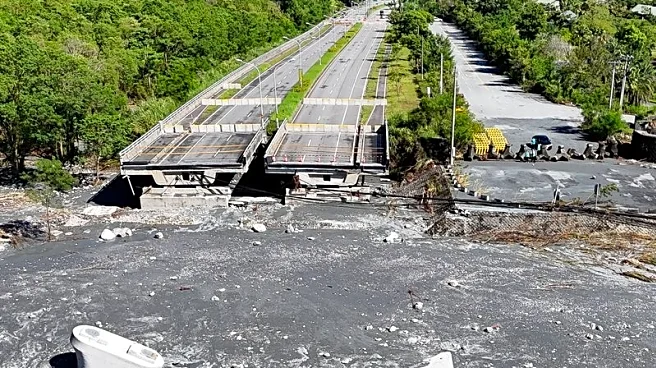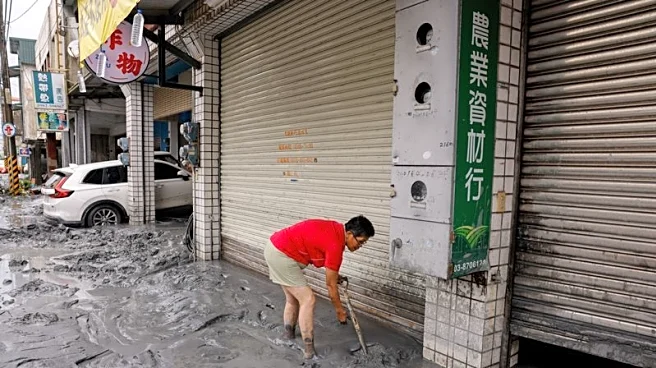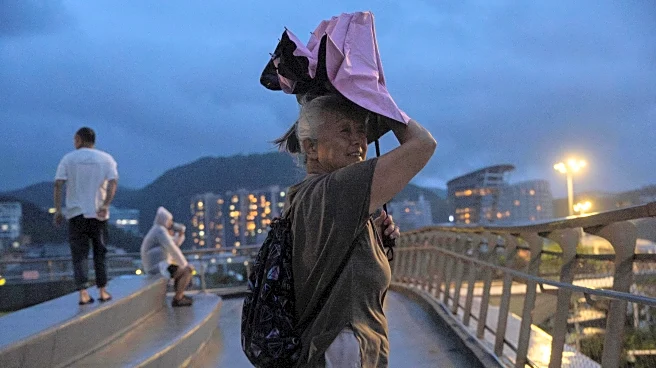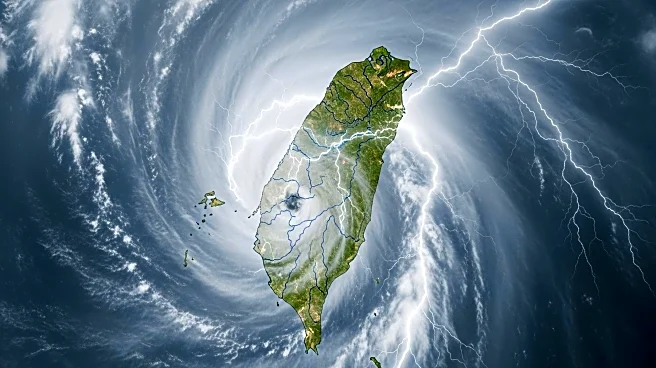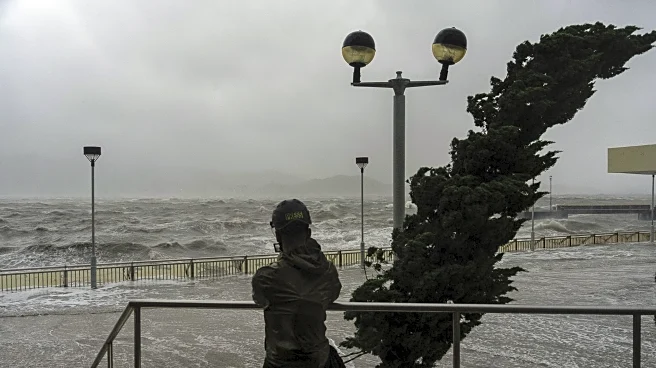What's Happening?
Taiwan's fire department has revised the death toll from Super Typhoon Ragasa to 14, down from an earlier count of 17, due to double-counting. The typhoon caused a barrier lake in Hualien county to overflow, resulting in a flood that devastated the town of Guangfu. Currently, 33 people remain missing, a decrease from the initial 152 reported missing. Rescue efforts are ongoing, with soldiers and residents working to clear mud and debris. Taiwan President Lai Ching-te has pledged a month of his salary to aid relief efforts and plans to visit the affected area.
Why It's Important?
The revision of the death toll and ongoing search efforts highlight the challenges faced by Taiwan in disaster management and response. The typhoon's impact on infrastructure, such as the destruction of a bridge and disruption of transportation, underscores the vulnerability of remote areas to natural disasters. The government's commitment to relief efforts reflects the importance of addressing the needs of displaced residents and rebuilding affected communities. The situation also raises concerns about the safety of barrier dams and the need for improved disaster preparedness.
What's Next?
Taiwan's government continues to monitor the barrier dam in the mountains behind Guangfu, maintaining warnings despite the cessation of rain. President Lai's visit to the disaster zone may lead to further government action and support for affected residents. The investigation into the deaths, particularly those occurring on the first floors of buildings, could result in policy changes to enhance building safety standards. The ongoing rescue operations aim to locate the missing individuals, with authorities urged to utilize the 'golden rescue window' effectively.
Beyond the Headlines
The disaster in Taiwan highlights the broader implications of climate change and extreme weather events on infrastructure and community safety. The government's response and international aid efforts may influence future policies on disaster preparedness and environmental management. The situation also emphasizes the need for global cooperation in addressing the impacts of climate change and supporting vulnerable regions.

